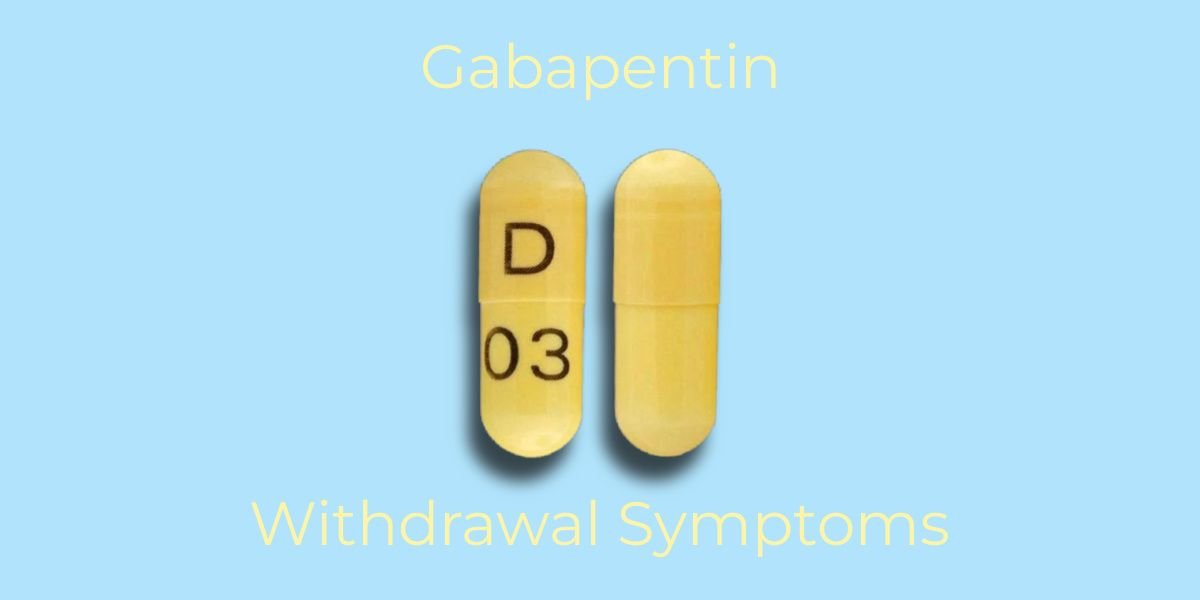Gabapentin is not a controlled substance and historically was thought to be a less addictive alternative to opioids for people suffering from neuropathic pain. In recent years, there have been increased reports of people abusing this medication, and even becoming addicted to it. In high doses, this medication can lead to adverse effects, overdose, and even death.
- Currently, there are only a handful of FDA-approved medications used to treat addiction withdrawal symptoms. Gabapentin is occasionally used to treat withdrawal but is considered an off-label alternative
- Due to its potentially adverse side effects, such as suicidal thoughts and abrupt behavioral changes, gabapentin is only recommended for use under medical supervision. Other possible health risks include elevated blood pressure, insomnia, fever, chest pain, and changes in appetite
- According to the medical journal, The Annals of Pharmacotherapy, the rate of gabapentin misuse among the general population was only 1.1 percent while the rate of misuse in addiction treatment centers was 22 percent
.jpg?v=1756808565)
What is Gabapentin?
Gabapentin is an anticonvulsant medication used to treat nerve pain and seizures. It has relaxing and pain-killing effects similar to certain sedatives. While it is not a controlled substance, a growing number of people are reporting abuse and addiction to this medication.[1]
Gabapentin is also known by the brand names Neurontin and Gralise, and is a prescription painkiller with its own drug class, gabapentinoids. It acts as an anticonvulsant and is commonly used to treat epilepsy, chronic pain, hot flashes, restless leg syndrome, diabetic neuropathy, fibromyalgia, partial seizures, and neuropathic or nerve pain.
It is considered to be a less addictive alternative to opioid painkillers. It is sometimes used to treat withdrawal symptoms from substances like cocaine and heroin. Gabapentin does carry some risk of abuse and addiction and can also have adverse side effects, such as suicidal thoughts, mood swings, and acute changes in behavior.
Gabapentin as an addiction treatment medication
Currently, there are only a handful of FDA-approved medications used to treat addiction withdrawal symptoms. Gabapentin is occasionally used to treat withdrawal but is considered an off-label alternative.
While many pharmaceutical companies have manufactured gabapentinoids for use in withdrawal treatment, it is still part of a wide range of medications, and some treatment facilities will prefer to use more recognized alternatives, depending on the addiction type and medical history. Some alternatives to gabapentin treatment include:
- Clonidine
- Other anticonvulsants, such as Tegretol and Lyrica
- Methadone and buprenorphine
- Naltrexone
What is a normal dose of Gabapentin?
Doses range from 100mg to 800mg. The frequency of administration may be based on various factors such as withdrawal symptom severity and withdrawal progress. The drug’s half-life is around 5-7 hours. While it is mainly used to treat nerve pain and seizures, it is sometimes administered to people in recovery who want to reduce withdrawals and cravings from alcohol, opioids, or other drugs.
Risks of Gabapentin to treat addiction
Due to its potentially adverse side effects, such as suicidal thoughts and abrupt behavioral changes, gabapentin is only recommended for use under medical supervision. Other possible health risks include elevated blood pressure, insomnia, fever, chest pain, and changes in appetite.
Though it is used to treat multiple addictions, it is most prevalently used to treat withdrawal symptoms from alcoholism. Those who are detoxing from alcohol may experience delirium tremens, a condition that causes tremors in the body. The calming effects of gabapentin reduce these symptoms, which makes it ideal for other withdrawal symptoms, such as seizures caused by severe benzodiazepine withdrawal.
Related: Does gabapentin cause weight gain?
Though gabapentin has a proven ability to calm the central nervous system, not much is known about how it exactly works or which receptors it directly interacts with. A balance of excitatory and inhibitory nervous system activity is, in part, mediated by neurotransmitters known as GABA and glutamate. Gabapentin may work by potentiating the inhibitory signaling of GABA and reducing the neural excitation associated with glutamate activity. As a result, signals for pain, agitation, and anxiety are reduced, too.
There are additional risks if someone is taking opioids to treat pain while also taking gabapentin. For example, mixing Tramadol and gabapentin can cause respiratory depression and death. It is important to disclose all details of any medication you are taking before starting medication-assisted treatment.
Gabapentin abuse
Gabapentin abuse tends to occur in people who already have an addiction to opioids or other drugs. While gabapentin is not thought to cause people to get high, some people do report experiencing a sense of calm, euphoria, and effects similar to marijuana.[1]
People who have had previous substance abuse problems with alcohol, opioids, cocaine, and other substances may be more likely to abuse gabapentin. According to the medical journal, The Annals of Pharmacotherapy, the rate of gabapentin misuse among the general population was only 1.1 percent while the rate of misuse in addiction treatment centers was 22 percent.[4]
According to the 2017 National Survey on Drug Use and Health, 0.4 million Americans misused prescription sedatives like gabapentin in the past month. The FDA reports that in recent years, it has been encountered more regularly by law enforcement, has been documented in national crime lab reports, reported to poison control centers, and diverted for illegal use. Reports from law enforcement also indicate that it is being used as a cutting agent in illegal drugs such as heroin.
Gabapentin’s unique ability to address multiple ailments has made it one of the most popular prescription medications in the U.S. In May of 2019, GoodRx reported that it was the fifth-most prescribed drug in the nation. Despite its low abuse potential, its ability to be used in conjunction with other drugs causes widespread harm and addiction.
Is Gabapentin addictive?
Gabapentin abuse can often lead to someone developing an addiction, though they are not the same thing. Gabapentin abuse will often cause negative side effects to the user and in most cases requires help to overcome.
Like most forms of addiction, a person with a gabapentin use disorder will be diagnosed by a licensed professional using these 11 criteria, outlined by the DSM-5:[4]
- Hazardous use: You have used the substance in ways that are dangerous to yourself and/or others, i.e., overdosed, driven while under the influence, or blacked out.
- Social or interpersonal problems related to use: Substance use has caused relationship problems or conflicts with others.
- Neglected major roles to use: You have failed to meet your responsibilities at work, school, or home because of substance use.
- Withdrawal: When you stop using the substance, you experience withdrawal symptoms.
- Tolerance: You have built up a tolerance to the substance so that you have to use more to get the same effect.
- Used larger amounts/longer: You have started to use larger amounts or use the substance for longer amounts of time.
- Repeated attempts to control use or quit: You've tried to cut back or quit entirely, but haven't been successful.
- Much time spent using: You spend a lot of your time using the substance.
- Physical or psychological problems related to use: Your substance use has led to physical health problems, such as liver damage or lung cancer, or psychological issues, such as depression or anxiety.
- Activities given up to use: You have skipped activities or stopped doing activities you once enjoyed in order to use the substance.
- Craving: You have experienced an intense craving for the substance.
These criteria are measured by the negative impact the substance has on a person's life; including physical, psychological, and behavioral measures, and are classified as mild, moderate, and severe. The criteria are measured against the previous 12 months of substance use and a score of 2-3 is considered mild, 3-5 moderate, and 6 or more severe. [4] Even severe gabapentin addictions can be treated and overcome.
Signs of a gabapentin addiction
Effects of excessive Gabapentin use include:
- Drowsiness
- Coordination problems
- Tremors
- Dizziness
- Depression
- Suicidal thoughts/behaviors
- Changes in mood
- Dizziness
- Poor coordination
- Forgetfulness
- Anxiety
- Difficulty speaking
- Inability to feel pleasure
Many people start abusing Gabapentin in the early stages of recovery from other substance abuse. This is because the medication does not show up on most drug tests. Gabapentin abusers will also often take the drug in conjunction with other substances, such as opioid painkillers, in order to get a stronger high. This combination can be deadly and increases the potential for a fatal overdose.
Gabapentin withdrawal symptoms
Gabapentin has a low addictive potential, but if abused it can still cause a tolerance to build and withdrawal symptoms to manifest if use stops. Common Gabapentin withdrawal symptoms include:
- Insomnia
- Nausea
- Pain
- Sweating
- Flu-Like symptoms
- Rebound pain
- Cravings
- Anxiety
- Mood swings
- Suicidal thoughts and/or behaviors
As gabapentin is often abused simultaneously with other drugs, the withdrawal symptoms experienced by the abuser can be unpredictable. This means it is always strongly advised to attend a medically supervised detox in order to experience withdrawal symptoms as comfortably and safely as possible.
Treating a gabapentin addiction
Frequent and excessive use of Gabapentin can lead to a physical and psychological dependence on the drug. This is when someone becomes so accustomed to taking a drug that they need it to feel and function normally, and have trouble moderating and controlling their use of the substance. They may also become physically addicted to the medication and experience tolerance, cravings, and withdrawal.[4]
Quitting a drug like Gabapentin cold turkey can be dangerous and induce withdrawal symptoms of varying severity. These include anxiety, insomnia, nausea, pain, and sweating. Quitting also increases one’s likelihood of having a seizure which can lead to personal injury or the development of medical problems and life-threatening emergencies. For these reasons, some people may need to detox from the medication in an inpatient detox or rehab facility.
Get help today
If you believe you or a loved one is dealing with a substance use disorder involving gabapentin or other drugs, reach out to an inpatient or outpatient addiction treatment center. A formal assessment and evaluation can help to determine your diagnosis and evaluate the best treatment options for you.




-tablets-(1)-guide-detail.jpg?v=1722503547)